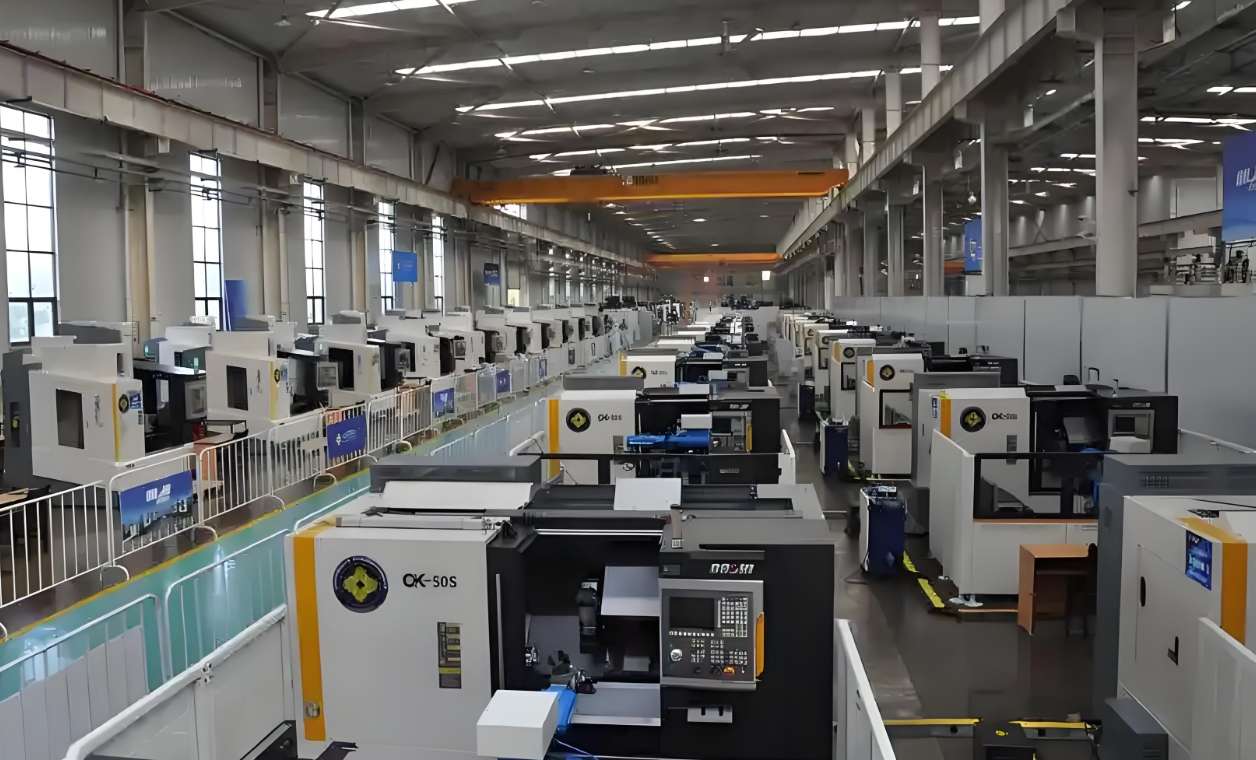
When German automakers discover that the pass rate data of a gearbox housing from an Asian supplier is inflated by 20%,or when a US medical enterprise is forced to recall products due to burrs on joint parts exceeding standards,these lessons reveal the core challenge of cross-border procurement:How to penetrate the facade of commercial presentations and assess the true CNC machining capabilities of suppliers?
Three-Dimensional Inspection of Manufacturing Capabilities
In-Depth Decoding of Equipment DNA
When stepping into the workshop,focus on these details:
•CNC Equipment Status:Check the laser calibration reports of five-axis machining centers.Is the positioning accuracy consistently maintained within 0.003 mm?Does the spindle vibration value comply with VDI standards?
•Tool Lifecycle Management:Observe whether the 0.2 mm drill bits used for micro-milling are subject to life counting.Are coated tools stored in a light-proof and moisture-proof manner?
•Rigorous Environmental Control:Is the temperature fluctuation in the large metal part machining area≤±1°C?Is the titanium alloy machining area isolated from oil mist contamination?
A wind power company once faced batch deformation and scrapping of planet carriers because a supplier used a three-axis machine to masquerade as a five-axis machining center.This serves as a warning that the equipment nameplate is only the starting point;the operation log is the truth.
Quantitative Verification of Process Capability
Key actions beyond ISO certificates:
•Dimensional Stability Testing:Randomly select 50 precision metal parts processed by turning and milling,and calculate the CPK value of critical dimensions(≥1.67 is the industry gold standard).
•Material Traceability Audit:Track the melting furnace number of aerospace-grade titanium alloy and verify the continuity of warehouse temperature and humidity records.
•Exception Response Stress Test:Retrieve the last three tool breakage reports to verify the effectiveness of the first-piece reinspection process.
During a surprise audit of a surgical robot company,it was found that the supplier had mixed medical-grade 316L stainless steel with industrial-grade material,thereby preventing a significant risk in a timely manner.
Quality Closed-Loop Penetration Inspection
Dissecting the reliability of the inspection system:
•Measurement Chain Trustworthiness Verification:Confirm the calibration records of the three-coordinate machine equipped with a laser interferometer.Are parts with a tolerance of 0.01 mm re-inspected using a white light interferometer?
•Data Flow Integrity:Check whether the inspection program is updated in sync with the modification of machining parameters,and whether measurement data can be traced back to specific machines in real time.
•Depth of Failure Analysis:Review the analysis reports of recently scrapped parts to see if the exact process parameter defects have been identified.
Cross-Border Audit Practical Strategies
Scenario-Based Stress Testing
At the site of a photovoltaic robot joint supplier:
•Dynamic Changeover Challenge:Temporarily switch to the machining program for electric motor housings used in new energy vehicles and observe the efficiency of standard operating procedures.
•Tolerance Limit Testing:Tighten the tolerances on the drawings by 30%to assess the process margin and the engineering team's adaptability.
•Full-Chain Traceability:Randomly select finished products and trace them backward to verify the complete data chain from raw materials to finished products.
Cultural Penetration Method
In the workshop of an East Asian supplier:
•Morning Meeting Immersion Observation:Participate in the production morning meeting and listen to workers discussing machining pain points and solution logic.
•Night Shift Surprise Inspection:At 10 p.m.,verify the consistency between machining programs and process cards to test the true resilience of the quality system.
•Equipment Log Decryption:Retrieve the backend data stream of the CNC system and compare the actual cutting parameters with the process specifications.
Red Signals of Risk Warning
High-Risk Alert:For companies processing large metal parts,the absence of an online vibration monitoring system is like a pilot ignoring the dashboard.One supplier once had a flatness deviation of 0.3 mm on a wind power base due to unmonitored vibration offset of a gantry milling machine.
Medium-Risk Warning:Failure to use deformation compensation algorithms when machining thin-walled cavity parts by turning and milling significantly increases the risk of failure.A drone frame supplier experienced millimeter-level deformation after assembly due to ignoring residual stress release.
Basic Defect:Failure to analyze inspection data in conjunction with machining parameters is like a doctor prescribing medicine without reviewing the medical history.One hydraulic valve body supplier missed detecting batch deviations caused by tool wear due to this issue.
From Audit to Co-Evolution
When a European original equipment manufacturer(OEM)used this system to evaluate a Chinese supplier:
•It was found that the supplier lacked a thermal deformation compensation module during the precision machining stage of new energy motor housings.
•Engineers from both sides jointly developed an adaptive machining algorithm.
•The flatness pass rate of the housings jumped from 82%to 99.5%.
•The supplier gained access to the customer's heat treatment database in return.
This deep collaboration reduced procurement costs by 18%and compressed the new product development cycle by 40%,proving that the highest level of cross-border procurement is to turn audits into opportunities for process dialogue.
When standing in the supplier's workshop,remember that the cutting parameters flickering on the CNC screen,the calibration labels of the inspection instruments,and the life counters in the tool cabinet are all more honest process languages than any certificate.In the high-end manufacturing field,trust is rooted in the shared reverence for the laws of metal deformation—this is the most resilient bond of the global supply chain.